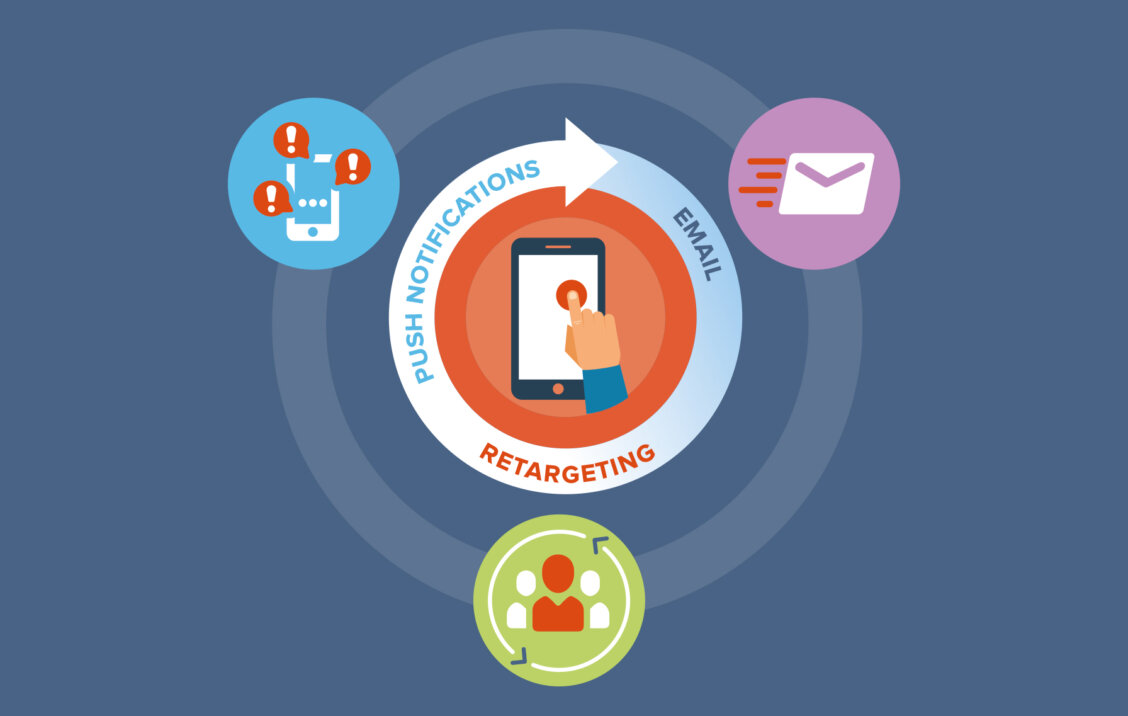
Retention Marketing: Building Mobile App Value Through Smart Targeting
Retention marketing is all about signals. When someone downloads your app, they are giving you their first and most important signal: that they intend to use your app. The basic assumption we make about people who download the SeatGeek app is that they are ultimately interested in purchasing tickets to live events. Therefore, any actions we take that move them towards a purchase benefits both SeatGeek and our users. The most important thing to remember about retention marketing is that it provides value to your users; they will be more engaged and interested, and that will make them more valuable to you.
Let’s take a look at how SeatGeek successfully employs retention marketing by looking at the key components: The Media and Audience Segmentation.
The Media
SeatGeek’s retention strategies are built around three types of media: push notifications, emails, and retargeting. Each medium has its own strengths and drawbacks, so it’s been essential for us to use all three in concert.
Email marketing is arguably the most important component of user retention. It is far and away the cheapest way to reach your users, and there are relatively few limitations on what content you can include. Because you can include more content, email has the potential to provide your users with the most value. Email is a relatively asynchronous form of communication, though, so information can be out of date by the time someone reads it. At SeatGeek, the event calendar is constantly evolving, so even if someone opens an email just 1-2 days after it is sent, the content may already be obsolete.
Push notifications, by comparison, are limited in both the quantity and type of content that they include. The main value of push notifications for us is that they are more likely to be read immediately and that we can deep-link a user to exactly what we want them to see. SeatGeek’s push notifications are opt-in and only on iOS, which means that they don’t have the same reach as our emails, but they’re really useful for sending quick notifications that get users’ attention.
Retargeting provides scale to retention marketing. There’s a limit to how frequently you can send emails push notifications to users before they unsubscribe (or worse, uninstall your app). The worst case scenario for a retargeted ad is that it’s ignored. Retargeted ads are a great way to reach someone who doesn’t get push notifications and checks email infrequently. The bulk of retargeting ads SeatGeek runs are dynamic, which means that a user is always served fresh content. Generally speaking, retargeting ads will be transactionally focused.
Audience Segmentation
At the end of the day, the quantity and freshness of information takes a backseat to the relevance of the information. Audience segmentation is crucial to making sure users get the most useful information. At any given point in time we have tens of thousands of events that we could be promoting to each user, so we need to make sure that the right people are getting served the right information. There are two main ways we segment users: by their preferences and by their stage in the user lifecycle.
Preferences can be explicit or implicit based on a user’s actions. We offer the ability for users to track teams, performers, and events; we also know when a person has purchased tickets to an event. This gives us an explicit set of preferences. With this information, we can send a user alerts about their favorite teams and bands. When someone has already purchased a ticket to an event, we can suppress alerts about it for that user. We can also layer in geographic information to further narrow down what is relevant.
Any activity a user takes on our app also helps inform us about their implicit preferences. If someone searches for Yankees tickets, for example, it’s safe to assume that that user enjoys baseball and the Yankees. Users who track One Direction are also likely to be interested in Taylor Swift. Recognizing similar patterns will give you a much more complete picture of each user.
Another way we can add value for users is by helping them out at different stages in their membership. People who have recently downloaded the app may not be familiar with all of its features; since user information is the backbone of our retention strategy, we like to encourage new users to spend time exploring the app and tracking events. We can send them emails that explain cool features in detail, and we can send them push notifications with quick tips on how we can be more helpful. Once we have some information on users and what they are interested in, we can start layering in retargeting ads featuring information on relevant events.
All users are different, so once we understand some basic things about someone (how frequently they like to receive notifications, general event preferences, etc.), we can modify our messaging accordingly. If we notice that someone prefers relatively infrequent notifications, we will slow down the rate that we email someone; if we notice that someone else frequently makes last minute ticket purchases, we will take that into account as well. When someone hasn’t been on the app in a while, we will try to get them re-engaged with a combination of messaging.
In order to delight your users, you will need to use all of the data at your disposal. The relevance and quality of information you send to users are the most important factors in determining the success of your retention marketing campaigns.
 Learn more about marketing an eCommerce app!
Learn more about marketing an eCommerce app!
Listen to Nick Adkins’ Mobile Heroes podcast